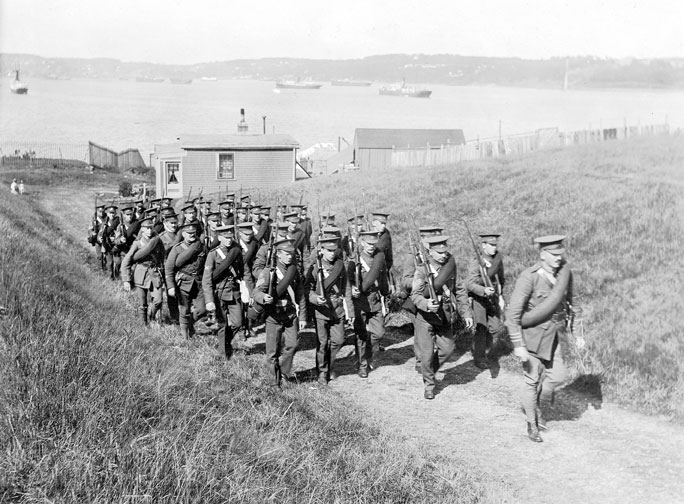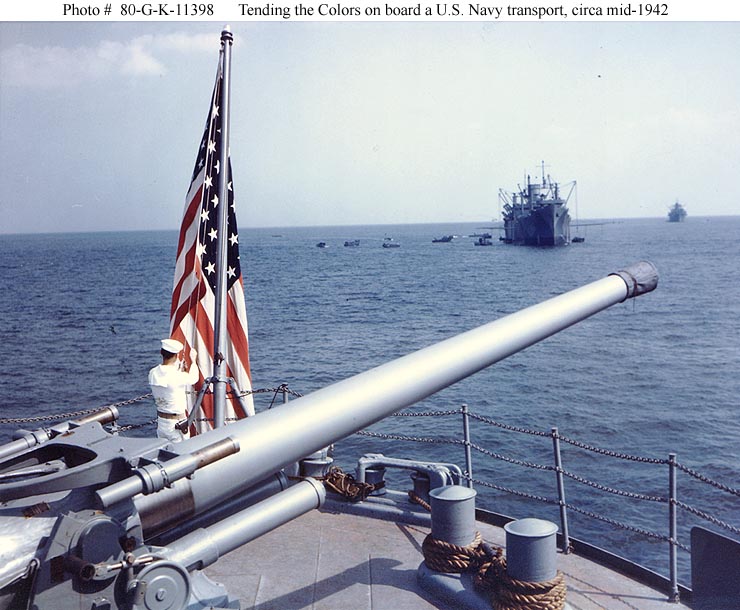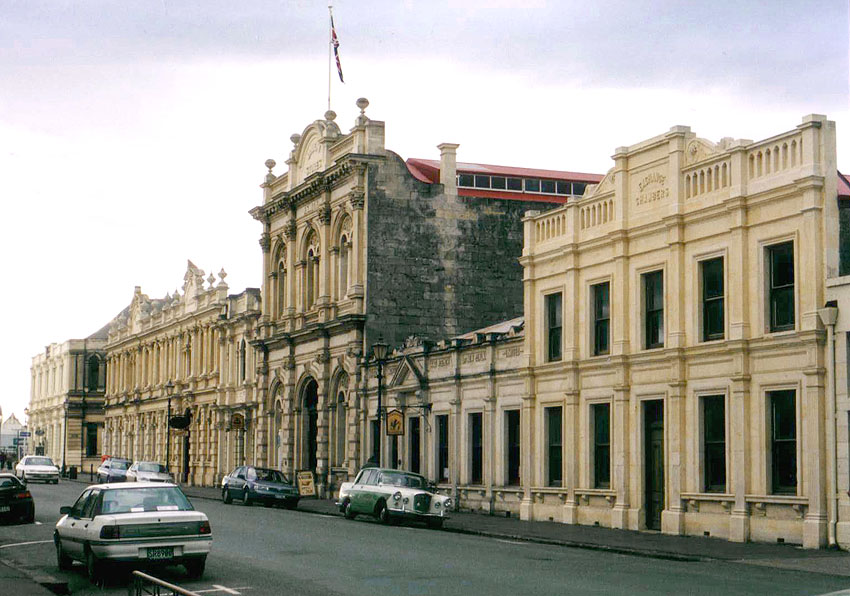|
13th Coast Regiment, New Zealand Artillery
The 13th Coast Regiment, New Zealand Artillery was a coastal artillery regiment of the New Zealand Military Forces. It was formed in May 1943 from the coastal defence batteries based in the lower South Island, which were formerly part of 11th Coast Regiment. The regiment consisted of: *82 Battery (Taiaroa Head: one 6" EOC gun; Rerewahine: two 6" Mk VII guns; Tomahawk Beach: two 6" Mk VII guns; Harrington Point: two twin 6-pounder guns and two 6-pounder guns) *141 Battery (Oamaru: one 5" Mk VIII gun) *142 Battery (Bluff: 6" Mk VII gun) The 13th Coast Regiment was disbanded in December 1943 and the batteries returned to the 11th Coast Regiment. Affiliations * — Royal Artillery * — Royal Canadian Artillery * — Royal Australian Artillery The Royal Regiment of Australian Artillery, normally referred to as the Royal Australian Artillery (RAA), is a Regiment of the Australian Army descended from the original colonial artillery units prior to Australia's federation. Austr ... [...More Info...] [...Related Items...] OR: [Wikipedia] [Google] [Baidu] |
Cap Badge
A cap badge, also known as head badge or hat badge, is a badge worn on uniform headgear and distinguishes the wearer's nationality and/or organisation. The wearing of cap badges is a convention commonly found among military and police forces, as well as uniformed civilian groups such as the Boy Scouts, civil defence organisations, ambulance services (e.g. the St. John Ambulance Brigade), customs services, fire services etc. Cap badges are a modern form of heraldry and their design generally incorporates highly symbolic devices. Some badges that contain images of Lions or other cats are sometimes informally referred to as Cat Badges. Instances in military forces British armed forces The British Armed Forces utilise a variety of metal and cloth cap badges on their headdress, generally on caps and berets. They are also worn on Sikh turbans. British Army In the British Army (as well as other Commonwealth armies) each regiment and corps has its own cap badge. The cap badge ... [...More Info...] [...Related Items...] OR: [Wikipedia] [Google] [Baidu] |
Tomahawk Beach
Tomahawk Beach is a beach on the Pacific Ocean southeast of the city centre of Dunedin, New Zealand. Located within the Ocean Grove Reserve between St Kilda Beach and Smaills Beach, at the point where Otago Peninsula joins the mainland of the South Island, Tomahawk Beach is a white sand beach popular with casual beach-goers and dog-walkers as well as surfers. Sand is extracted from the Tomahawk Lagoon channel, which runs across the beach, for commercial purposes and to prevent flooding. Name The word "Tomahawk", documented in the ''Otago Witness'' from 1852, is unlikely to be a reference to the weapon; it is more likely an anglicized form of the Māori words ''toma haka''. ''Toma'' means a place of bones, or shrine for bones; ''haka'' is commonly taken to refer to the Māori dance of challenge (hence the interpretation "dance by a gravesite"), but may instead represent the Southern Māori form of the word ''hanga'', to build or create. However, there are no known pre-Eur ... [...More Info...] [...Related Items...] OR: [Wikipedia] [Google] [Baidu] |
Artillery Regiments Of New Zealand
Artillery is a class of heavy military ranged weapons that launch munitions far beyond the range and power of infantry firearms. Early artillery development focused on the ability to breach defensive walls and fortifications during sieges, and led to heavy, fairly immobile siege engines. As technology improved, lighter, more mobile field artillery cannons developed for battlefield use. This development continues today; modern self-propelled artillery vehicles are highly mobile weapons of great versatility generally providing the largest share of an army's total firepower. Originally, the word "artillery" referred to any group of soldiers primarily armed with some form of manufactured weapon or armor. Since the introduction of gunpowder and cannon, "artillery" has largely meant cannons, and in contemporary usage, usually refers to shell-firing guns, howitzers, and mortars (collectively called ''barrel artillery'', ''cannon artillery'', ''gun artillery'', or - a layman te ... [...More Info...] [...Related Items...] OR: [Wikipedia] [Google] [Baidu] |
Royal Australian Artillery
The Royal Regiment of Australian Artillery, normally referred to as the Royal Australian Artillery (RAA), is a Regiment of the Australian Army descended from the original colonial artillery units prior to Australia's federation. Australia's first guns were landed from and a small earthen redoubt built, near the present-day Macquarie Place, to command the approaches to Sydney Cove. The deployment of these guns represents the origins of artillery in Australia. These and subsequent defences, as well as field guns, were operated by marines and the soldiers of infantry regiments stationed in Australia. Unlike their British and Canadian equivalents, there are no regiments of horse artillery in the order of battle of the Royal Australian Artillery. The First World War saw the raising of 60 field, 20 howitzer, and two siege batteries along with the heavy and medium trench mortar batteries. Until 19 September 1962 the Australian Artillery was referred to as the 'Royal Australian Artille ... [...More Info...] [...Related Items...] OR: [Wikipedia] [Google] [Baidu] |
Royal Canadian Artillery
, colors = The guns of the RCA themselves , colors_label = Colours , march = * Slow march: "Royal Artillery Slow March" * Quick march (dismounted parades): "British Grenadiers/The Voice of the Guns" * Trot past: "Keel Row" * Gallop past (horse artillery only): "Bonnie Dundee" , mascot = , anniversaries = * 1855: Militia Act of 1855 passed by the Parliament of the Province of Canada and creation the first truly Canadian army units * 27 November 1856: first Canadian Artillery unit formed (''Battalion of Montreal Artillery'') * 10 August 1883: ''Regiment of Canadian Artillery'' of the Permanent Active Militia authorized to be formed , equipment = * M101 howitzer#Variants, 105 mm Howitzer, C3 * GIAT LG1, 105 mm Howitzer, LG1 Mk II * M777 howitzer#Canada, 155 mm Howitzer M777C1 , equipment_label = Current weapon systems , battle_honours ... [...More Info...] [...Related Items...] OR: [Wikipedia] [Google] [Baidu] |
Royal Artillery
The Royal Regiment of Artillery, commonly referred to as the Royal Artillery (RA) and colloquially known as "The Gunners", is one of two regiments that make up the artillery arm of the British Army. The Royal Regiment of Artillery comprises thirteen Regular Army regiments, the King's Troop Royal Horse Artillery and five Army Reserve regiments. History Formation to 1799 Artillery was used by the English army as early as the Battle of Crécy in 1346, while Henry VIII established it as a semi-permanent function in the 16th century. Until the early 18th century, the majority of British regiments were raised for specific campaigns and disbanded on completion. An exception were gunners based at the Tower of London, Portsmouth and other forts around Britain, who were controlled by the Ordnance Office and stored and maintained equipment and provided personnel for field artillery 'traynes' that were organised as needed. These personnel, responsible in peacetime for maintaining the ... [...More Info...] [...Related Items...] OR: [Wikipedia] [Google] [Baidu] |
Bluff, New Zealand
Bluff ( mi, Motupōhue), previously known as Campbelltown and often referred to as "The Bluff", is a town and seaport in the Southland region, on the southern coast of the South Island of New Zealand. It is the southernmost town in mainland New Zealand and, despite Slope Point and Stewart Island being further south, Bluff is colloquially used to refer to the southern extremity of the country (particularly in the phrase "from Cape Reinga to The Bluff"). According to the 2018 census, the resident population was 1,797, a decrease of 6 since 2013. The Bluff area was one of the earliest areas of New Zealand where a European presence became established. The first ship known to have entered the harbour was the ''Perseverance'' in 1813, in search of flax trading possibilities, with the first European settlers arriving in 1823 or 1824. This is the foundation for the claimTiwai_Point.html" ;"title="Awarua Plain (top), Tiwai Point">Awarua Plain (top), Tiwai Point (centre) and Bluff (lo ... [...More Info...] [...Related Items...] OR: [Wikipedia] [Google] [Baidu] |
5-inch/51-caliber Gun
5"/51 caliber guns (spoken "five-inch-fifty-one-caliber") initially served as the secondary battery of United States Navy battleships built from 1907 through the 1920s, also serving on other vessels. United States naval gun terminology indicates the gun fired a projectile in diameter, and the barrel was 51 calibers long. Description The different marks of the gun were Marks 7, 8, 9, 14, and 15. The built-up gun consisted of a tube, full-length jacket, and single hoop with side swing Welin breech block and Smith-Asbury mechanism for a total weight of about 5 metric tons. Some Marks included a tapered liner. A charge of smokeless powder gave a projectile a velocity of . Range was at the maximum elevation of 20 degrees. Useful life expectancy was 900 effective full charges (EFC) per liner.Campbell 1985 p.136 US service The 5-inch/51 caliber gun was designed to engage destroyers, torpedo boats, and other surface targets. The 5"/51 gun entered service in 1911 as secondary ar ... [...More Info...] [...Related Items...] OR: [Wikipedia] [Google] [Baidu] |
Oamaru
Oamaru (; mi, Te Oha-a-Maru) is the largest town in North Otago, in the South Island of New Zealand, it is the main town in the Waitaki District. It is south of Timaru and north of Dunedin on the Pacific coast; State Highway 1 and the railway Main South Line connect it to both cities. With a population of , Oamaru is the 28th largest urban area in New Zealand, and the third largest in Otago behind Dunedin and Queenstown. The town is the seat of Waitaki District, which includes the surrounding towns of Kurow, Weston, Palmerston, and Hampden. which combined have a total population of 23,200. Friendly Bay is a popular recreational area located at the edge of Oamaru Harbour, south to Oamaru's main centre. Just to the north of Oamaru is the substantial Alliance Abattoir at Pukeuri, at a major junction with State Highway 83, the main route into the Waitaki Valley. This provides a road link to Kurow, Omarama, Otematata and via the Lindis Pass to Queenstown and Wanaka. Oamaru serv ... [...More Info...] [...Related Items...] OR: [Wikipedia] [Google] [Baidu] |
QF 6-pounder Nordenfelt
The QF 6 pounder Nordenfelt was a light 57 mm naval gun and coast defence gun of the late 19th century used by many countries. Note that this gun should not be confused with the short-barreled 57 mm Cockerill-Nordenfelt "Canon de caponnière" or fortification gun, which was used to arm the German A7V tank in World War I. Nordenfelt guns can be visually differentiated from equivalent and similar Hotchkiss guns by having slimmer barrels than the Hotchkiss, hence the Nordenfelt was considerably lighter. United Kingdom The UK adopted a 42-calibre version as Ordnance QF 6-pounder Nordenfelt British forces traditionally denoted smaller ordnance by the weight of its standard projectile, in this case . Mk I, Mk II, Mk III. United Kingdom Naval service They were originally mounted from 1885 onwards for use against the new (steam-driven) torpedo boats which started to enter service in the late 1870s. The Nordenfelt gun was adopted at the same time as the very similar QF 6 pou ... [...More Info...] [...Related Items...] OR: [Wikipedia] [Google] [Baidu] |
QF 6-pounder 10 Cwt Gun
The British QF (quick-firing) 6-pounder 10 cwt gun"6 pounder" refers to the approximate weight of projectiles, which was a traditional British way of denoting small guns. "10 cwt" referred to the approximate weight of the gun and breech in cwt (hundredweight) rounded up : 10 cwt = 10 x 112 pounds = 1,120 pounds. It was standard British practice to differentiate guns of the same calibre by adding weight in cwt to the description. was a 57 mm twin-mount light coast defence and naval gun from the 1930s to 1950s. Development Following the emergence of small fast attack craft during the First World War, it was decided that the British Royal Navy Dockyards were vulnerable to attack by motor torpedo boats which had the speed to evade the heavy coast defence guns which defended them. In 1925, a design was adopted for a twin-barrelled weapon capable of sustained semi-automatic fire. The barrels of the weapon could be fired singly or together. The pedestal mounting and the gun crew ... [...More Info...] [...Related Items...] OR: [Wikipedia] [Google] [Baidu] |
Harrington Point
The settlement of Harington Point (often incorrectly spelt ''Harrington Point'') lies within the boundaries of the city of Dunedin, New Zealand. It is located at the Otago Heads, at the northeastern end of Otago Peninsula, close to the entrance of Otago Harbour. The mouth of the harbour is at its narrowest at Harington Point, only some 400 metres separating the point from the mudflats at Aramoana on the opposing coast. Harington Point is located between Taiaroa Head, the site of the only mainland royal albatross colony in the world, and Te Rauone beach, historically known for its many sand dunes which have eroded. The settlement can be reached via a 45-minute drive from Dunedin City on sealed roads, and is also serviced 7 days per week by a regular bus service taking 60 minutes from the city center, as well as a school bus. Despite its small size, Harington Point offers accommodation ranging from holiday houses to self-contained motel units. Wildlife The settlement of Haring ... [...More Info...] [...Related Items...] OR: [Wikipedia] [Google] [Baidu] |
.jpg)




